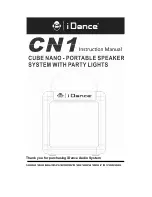
mr
.
steam
®
C U S E R I E S
Installation, Operating & Maintenance Manual
WATER GAUGE & GAUGE GLASS
USE AND CARE
DO NOTs
DO NOT use glass if it contains any scratches,
chips, or any other visible signs of damage.
DO NOT reuse any tubular glass or glass packings.
DO NOT subject gauge glass to bending or
torsional stresses.
DO NOT over tighten glass packing nuts.
DO NOT allow glass to touch any metal parts.
DO NOT exceed the recommended pressure of the
gauge or gauge glass.
DO NOT clean the gauge or gauge glass while pres-
surized or in operation.
MAINTENANCE
Examine the gauge regularly for any signs of clouding,
scratching, erosion, or corrosion. The glass should be
inspected daily until the need for replacement
becomes apparent. This will help establish the routine
inspection and routine replacement schedules.
CLEANING
Use commercial non-abrasive glass cleaners to keep
glass clean. Use diluted acids such as Hydrochloric
(muriatic) acid when regular cleaners do not seem to
work. Do not use wire brushes or any other abrasive
materials which could scratch the glass
.
DOs
DO verify proper gauge has been supplied.
DO examine gauge glass and packings carefully for
damage before installation.
DO install protective guards and utilize automatic
ball checks where necessary to help prevent injury
in case of glass breakage.
DO inspect the gauge glass daily, keep
maintenance records, and conduct routine replace-
ments.
DO protect glass from sudden changes in
temperatures such as drafts, water spray, etc.
INSPECTION
Examine the surface of the glass for scratches, corro-
sion, chips, cracks, surface flaws, or nicks. To do this,
shine a very bright concentrated light at an angle of
about 45 degrees. A defective glass will glisten as
the light strikes imperfections. Glass which appears
cloudy or roughened, and will not respond to clean-
ing, should be replaced.
STORING
Keeping gauge glass in original packaging until
ready to install.
27














































